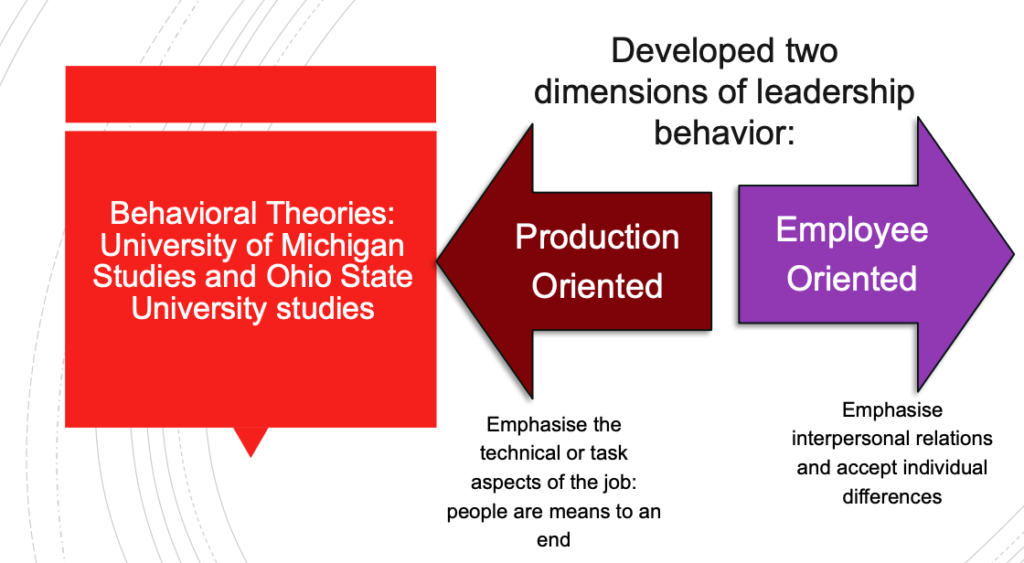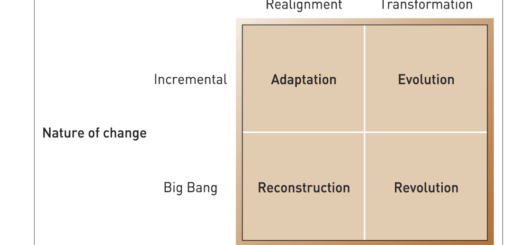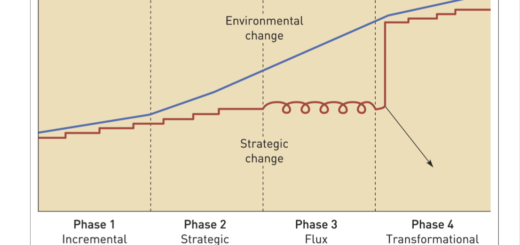Behavioral Theories
Behavioral Theories: University of Michigan Studies and Ohio State University studies

The behavioral theories of leadership emerged from studies conducted at the University of Michigan and Ohio State University. These studies identified two primary dimensions of leadership behavior, which are task-oriented behavior and people-oriented behavior. Here is a tabular representation of these dimensions:
| Dimension | University of Michigan Studies | Ohio State University Studies | Description |
|---|---|---|---|
| Task-Oriented Behavior | Initiating Structure | Production Orientation | This dimension focuses on a leader’s ability to organize tasks, set clear goals, and define roles and responsibilities for their team members. Task-oriented leaders prioritize achieving objectives and maintaining efficient processes. |
| People-Oriented Behavior | Consideration | Employee Orientation | This dimension emphasizes a leader’s ability to build strong relationships with their team members, show concern for their well-being, and create a supportive work environment. People-oriented leaders prioritize employee satisfaction, motivation, and personal growth. |
The University of Michigan Studies identified two leadership styles: initiating structure (task-oriented) and consideration (people-oriented). Similarly, the Ohio State University Studies identified two dimensions: production orientation (task-oriented) and employee orientation (people-oriented). Both sets of studies emphasize the importance of balancing task-oriented and people-oriented behaviors for effective leadership.
By understanding these two dimensions of leadership behavior, leaders can adapt their approach to suit the needs of their team members and organizational context, ultimately enhancing their effectiveness and contributing to the success of their organization.




